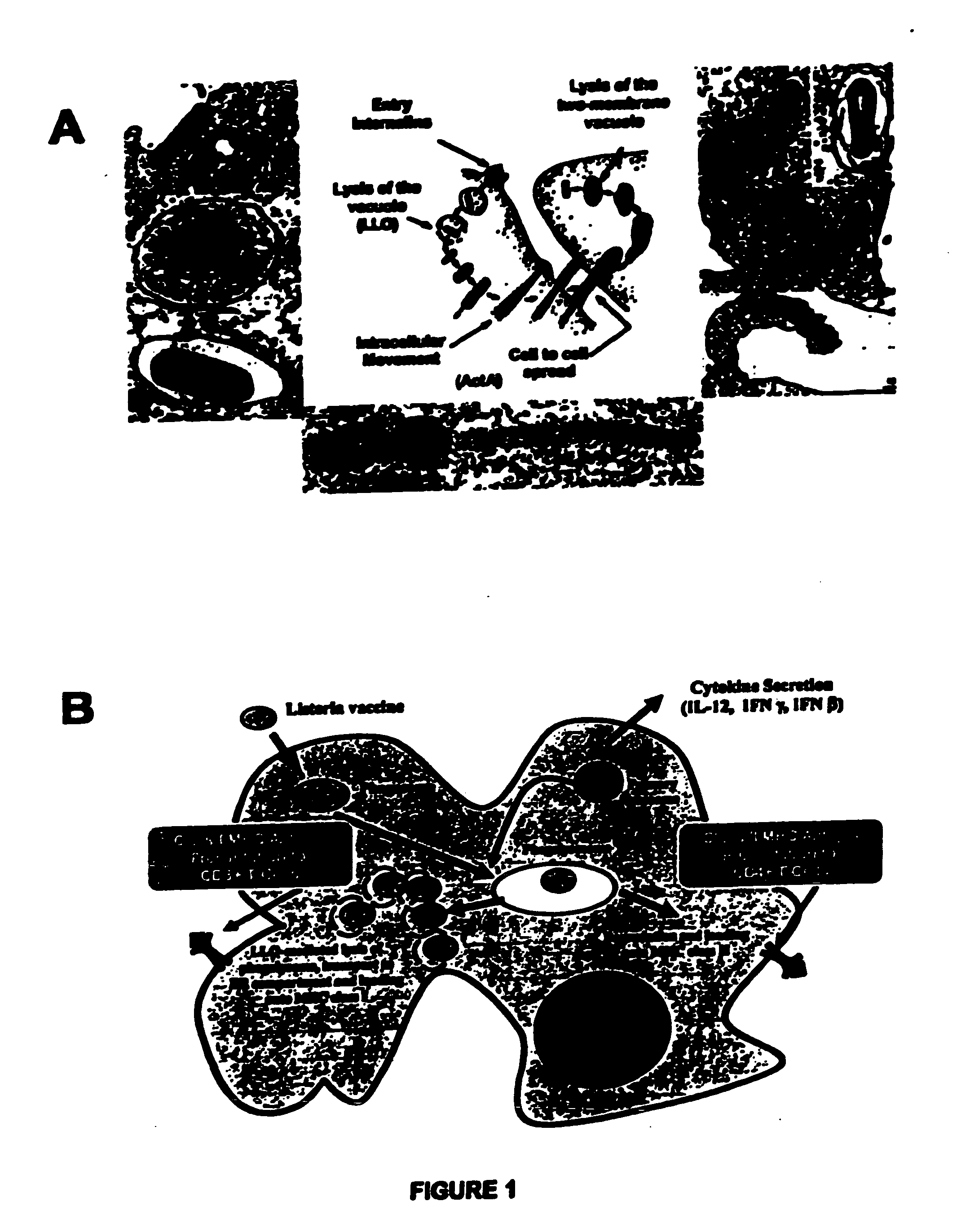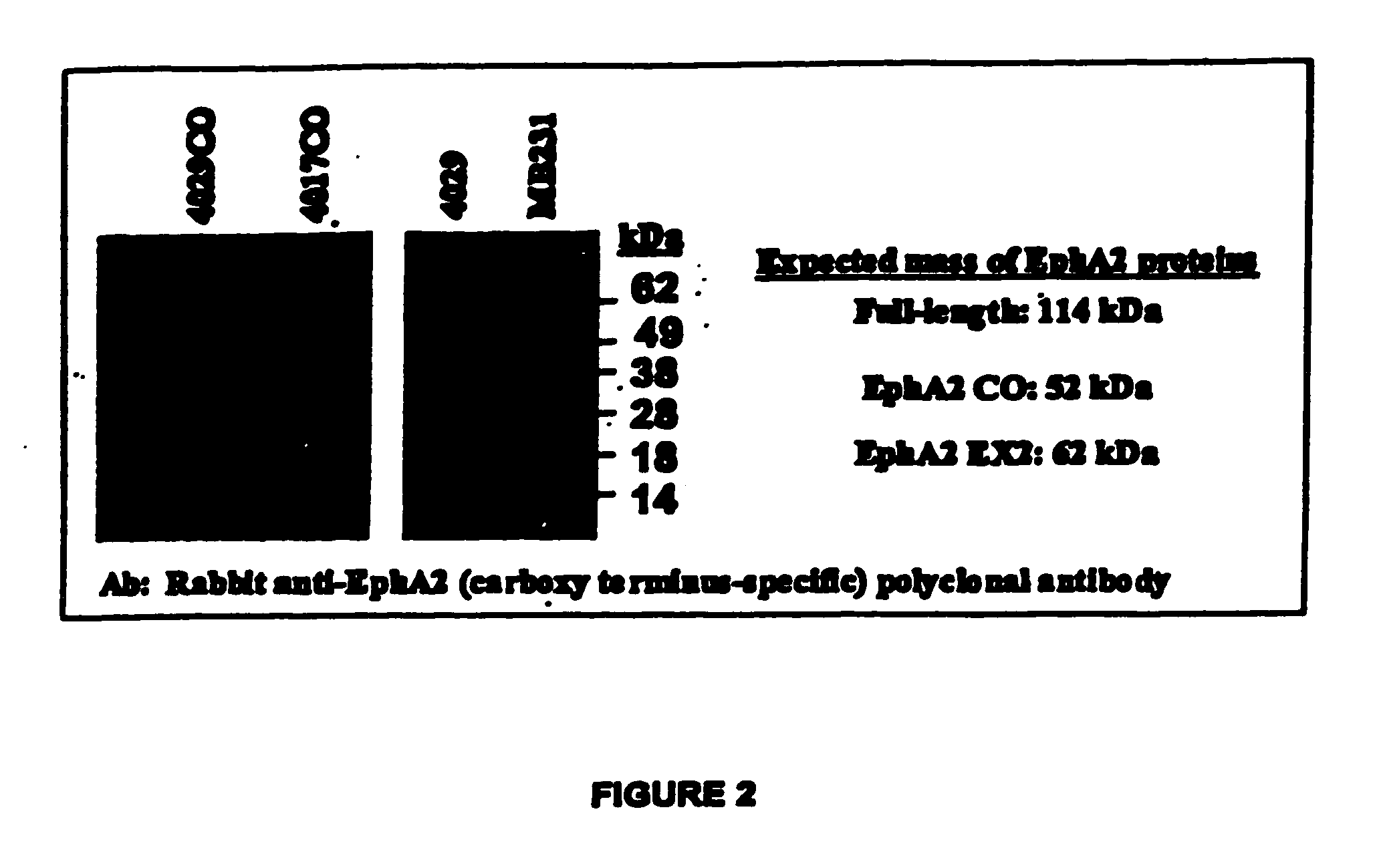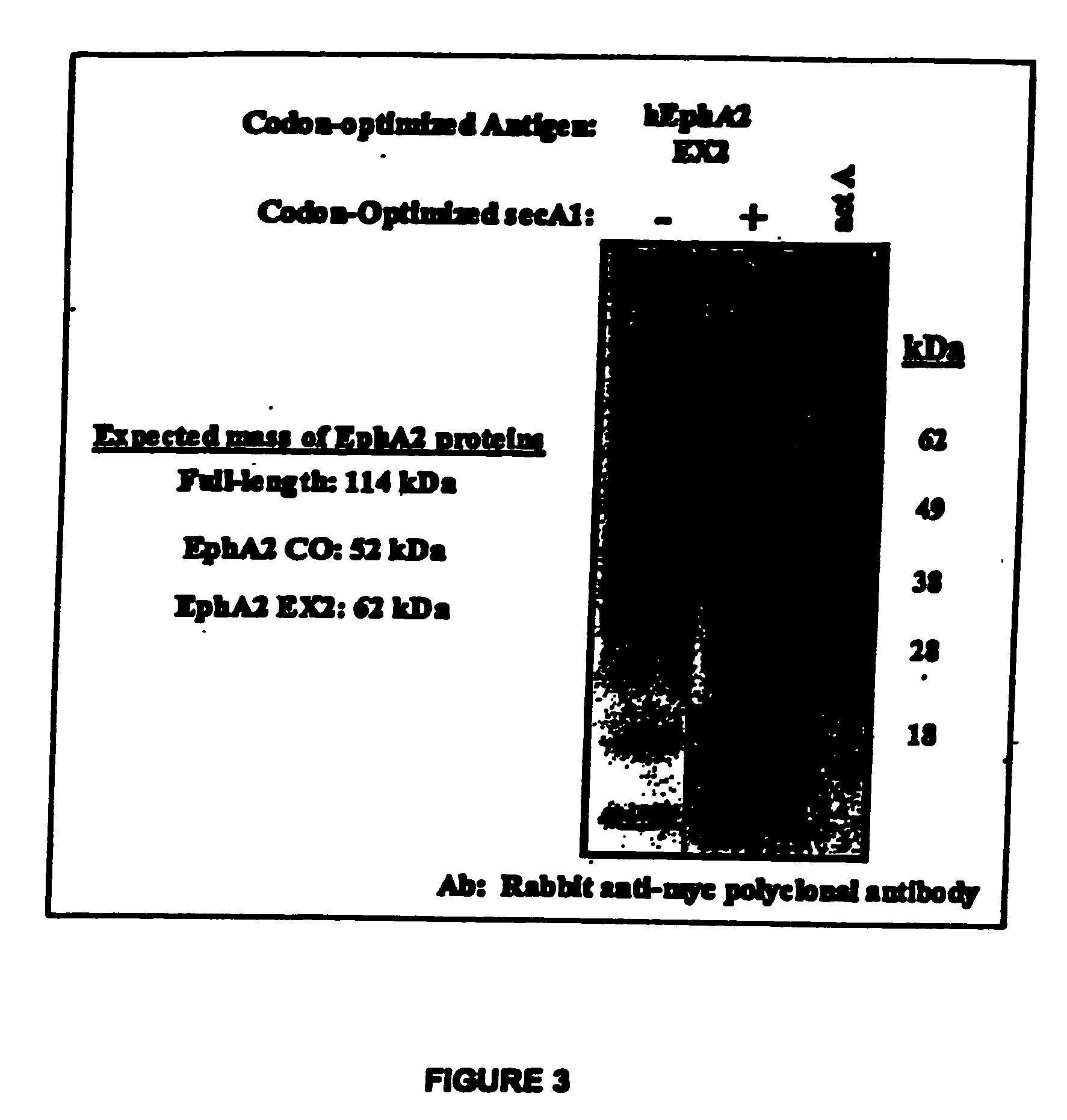Listeria-based EphA2 vaccines
a technology of epha2 vaccine and listeria, applied in the direction of antibody medical ingredients, drug compositions, immunological disorders, etc., can solve the problems of increasing the damage of the tumor, so as to achieve the metastatic potential of cancer cells, beneficial therapeutic and prophylactic effects
- Summary
- Abstract
- Description
- Claims
- Application Information
AI Technical Summary
Benefits of technology
Problems solved by technology
Method used
Image
Examples
example 1
6.1. Example 1
Listeria Life Cycle
[0455] The life cycle of Listeria monocytogenes, encompassing the steps of endocytosis, phagolysosomal lysis, and cell to cell spread, are shown in FIG. 1A-1B.
example 2
6.2. Example 2
Construction of EphA2-Expressing and Control Listeria Strains
[0456] 6.2.1. Background
[0457] Given the mechanisms by which Listeria programs the presentation of heterologous antigens via the MHC class I pathway, the efficiency of both expression of heterologous genes and secretion of the newly synthesized protein from the bacterium into the cytoplasm of the infected (antigen presenting) cell is related directly to the potency of CD8+ T cell priming and / or activation. As the level of Ag-specific T cell priming is related directly to vaccine efficacy, the efficiency of heterologous protein expression and secretion is linked directly to vaccine potency. Thus, the efficiency of EphA2 expression and secretion was optimized to maximize the potency of Listeria-based vaccines, in terms of priming and / or activating CD8+ T cell responses specific for the encoded EphA2 protein.
[0458] 6.2.2. Preparation of Mutant Listeria Strains.
[0459]Listeria strains were derived from 10403S ...
example 3
6.3. Example 3
Generation of Murine Tumor Cell Lines That Express Human EphA2
[0505] 6.3.1. Background
[0506] A mouse immunotherapy model was created for testing the Listeria-based vaccines of the invention. Three murine tumor cell lines, the CT26 murine colon carcinoma cell line, the B16F10 murine melanoma cell line, and the RenCa murine renal cell carcinoma cell line were created to express high levels of the huEphA2 protein. FACS cell sorting assays were performed to identify CT26, B16F10, and RenCa tumor cells expressing high levels of huEphA2, which were pooled and analyzed by Western blot analysis. Clones were further pooled by FACS cell sorting to generate subclones expressing the highest levels of huEphA2.
[0507] 6.3.2. Selection of CT26 Murine Colon Carcinoma Cells Expressing High Levels of huEphA2
[0508] 6.3.2.1. Transfection Assays With Lipofectamine™
[0509] CT26 cells were transfected with constructs containing huEphA2 using standard transfection techniques and commerciall...
PUM
| Property | Measurement | Unit |
|---|---|---|
| volume | aaaaa | aaaaa |
| temperature | aaaaa | aaaaa |
| temperature | aaaaa | aaaaa |
Abstract
Description
Claims
Application Information
 Login to View More
Login to View More - R&D
- Intellectual Property
- Life Sciences
- Materials
- Tech Scout
- Unparalleled Data Quality
- Higher Quality Content
- 60% Fewer Hallucinations
Browse by: Latest US Patents, China's latest patents, Technical Efficacy Thesaurus, Application Domain, Technology Topic, Popular Technical Reports.
© 2025 PatSnap. All rights reserved.Legal|Privacy policy|Modern Slavery Act Transparency Statement|Sitemap|About US| Contact US: help@patsnap.com



